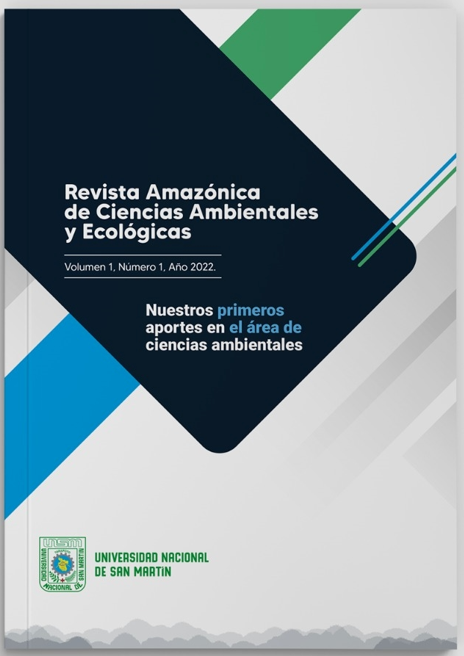Effect of anthropic pressure on three plant strata and its impact on the diversity and distribution of birds in the ZOCRE Morro de Calzada, Peru
DOI:
https://doi.org/10.51252/reacae.v1i1.290Keywords:
birds, conservation, diversity, fauna, floraAbstract
The loss of habitat caused by human activities causes a decrease in biodiversity and the extinction of species; one of the most affected environments is native or primary forests. This article sought to determine the diversity of avifauna present in three plant strata and analyze their degree of impact and variability with respect to anthropogenic pressure. The investigation was carried out in two areas adjacent to the Morro de Calzada conservation and recovery zone and the interior of the area. The bird samples were carried out between June 2018 and February 2019, with monthly evaluations in each installed transect. The results show that at the level of plant structure in the primary forest the richness amounted to 180 species, in the secondary forests only 66 species of birds and in the cultivation area only 49 species. As a percentage, it was obtained that more than 70% of the bird species existing in cultivation areas compared to the primary forest are absent and / or disappeared. Likewise, a significant percentage of bird species have moved towards the primary forest, so it can be attributed that if this conservation area did not exist, the richness of flora and fauna would have decreased exponentially. It is concluded that, for most birds, the heterogeneity found according to the diversity indices favors their presence in less altered habitats
Downloads
References
BirdLife International. (2018). El Estado de conservación de las aves del mundo: tomando el pulso de nuestro planeta. Cambridge, Reino Unido.
Dancé Caballero, J. (2018). Valoración económica de los servicios ecosistémicos que brindan los bosques y afines. Perú. Alternativa Financiera, 9(1), 71-78. https://www.aulavirtualusmp.pe/ojs/index.php/AF/article/view/1767
FAO. (2016). El Estado de los bosques del mundo 2016. Los bosques y la agricultura: desafíos y oportunidades en relación con el uso de la tierra. Organización de las Naciones Unidas para la Alimentación y la Agricultura.
Fernández Méndez, A. E. S. (2019). Ornitofauna de Otuzco, La Libertad, Perú, en el año 2019 [Universidad Nacional de Trujillo]. http://dspace.unitru.edu.pe/handle/UNITRU/13390
García Quinde, Y. L. (2019). Densidad poblacional de las aves cites presentes en el distrito Carmen de la Frontera - provincia de Huancabamba. Universidad Nacional de Piura.
Gobierno del Perú. (2020a). Día Mundial de Diversidad Biológica: Perú es el segundo país con mayor extensión de bosques. Andina. https://andina.pe/agencia/noticia-dia- de-diversidad-biologica-peru-es- segundo-pais-mayor-extension- bosques-798261.aspx
Gobierno del Perú. (2020b). Día Mundial de Diversidad Biológica: Perú es primero en el mundo en peces y mariposas. Andina. https://andina.pe/agencia/noticia-dia- mundial-diversidad-biologica-peru-es- primero-el-mundo-peces-y-mariposas- 798279.aspx
Llallahui Chiara, J. R. (2019). Evaluación de la Efectividad de un Mecanismo de Conservación Orientado a la Reforestación del Bosque de Protección Alto Mayo [Universidad Nacional Tecnológica de Lima Sur]. http://repositorio.untels.edu.pe/jspui/handle/123456789/172
MINAM. (2015). Guía de inventario de la fauna silvestre. Ministerio del Ambiente.
Negro, S. (2019). Reflexiones sobre el patrimonio cultural del Perú, contextos y perspectivas. Tradición, segunda época, 19, 169-177. https://doi.org/10.31381/tradicion.v0i19.2636
Pollack Velásquez, L. E. (2018). Aves silvestres asociadas a la flora urbana del distrito de Trujillo, región La Libertad, Perú, 2016-2017. Arnaldoa, 25(1), 241-272. https://doi.org/10.22497/arnaldoa.251.25114
Rojas Briceño, N. B., Barboza Castillo, E., Maicelo Quintana, J. L., Oliva Cruz, S. M., & Salas López, R. (2019). Deforestación en la Amazonía peruana: índices de cambios de cobertura y uso del suelo basado en SIG. Boletín de la Asociación de Geógrafos Españoles, 81. https://doi.org/10.21138/bage.2538a
Salas Tathum, R. A., & Cordón Suárez, E. (2017). Ornitofauna en cuatro ecosistemas naturales del laboratorio natural Snaki-URACCAN, Costa Caribe Norte de Nicaragua. Ciencia e Interculturalidad, 21(2), 85-102. https://doi.org/10.5377/rci.v21i2.5603
Velásquez Zapata, G. Y. (2020). Problemas medioambientales de la minería aurífera ilegal en Madre de Dios (Perú). Observatorio Medioambiental, 23, 229-241. https://doi.org/10.5209/obmd.73177
Walsh. (2015). Modificación del Estudio de Impacto Ambiental del Proyecto “Mejoras a la Seguridad Energética del País y Desarrollo del Gasoducto Sur Peruano – Variantes de los tramos KP 218+674 al KP 250+395 y KP 313+246 al KP 332+585 y Componentes Auxiliares.”
Published
How to Cite
Issue
Section
License
Copyright (c) 2022 José Gallardo-Vásquez, Santiago Casas-Luna

This work is licensed under a Creative Commons Attribution 4.0 International License.
The authors retain their rights:
a. The authors retain their trademark and patent rights, as well as any process or procedure described in the article.
b. The authors retain the right to share, copy, distribute, execute and publicly communicate the article published in the Revista Amazónica de Ciencias Ambientales y Ecológicas (REACAE) (for example, place it in an institutional repository or publish it in a book), with an acknowledgment of its initial publication in the REACAE.
c. Authors retain the right to make a subsequent publication of their work, to use the article or any part of it (for example: a compilation of their works, notes for conferences, thesis, or for a book), provided that they indicate the source of publication (authors of the work, journal, volume, number and date).




